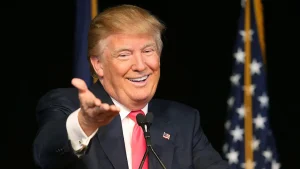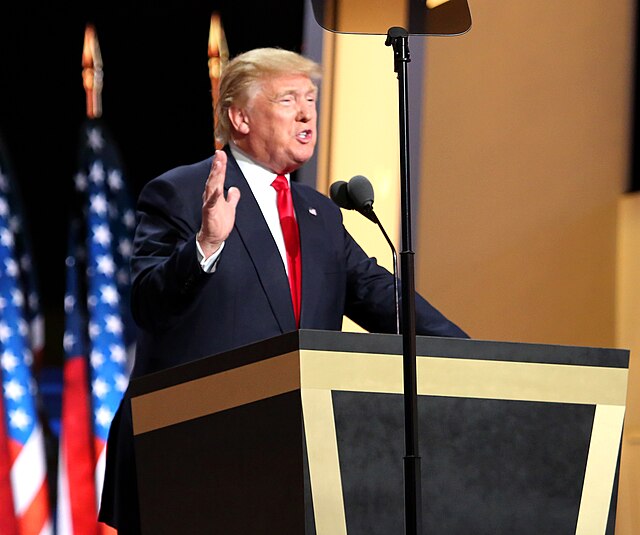The federal government is preparing for one of the largest workforce reductions in decades, as the Trump administration moves forward with plans to shrink the civilian federal workforce by approximately 300,000 employees by the end of 2025. The announcement reflects an ongoing effort to restructure government operations, emphasizing efficiency and cost reduction while generating significant debate over potential impacts on essential services.
According to estimates provided by Scott Kupor, Director of the Office of Personnel Management (OPM), roughly 80 percent of the projected departures are expected to be voluntary, with the remaining 20 percent resulting from targeted dismissals. Kupor described the approach as methodical, focusing on persuading cabinet secretaries to implement workforce reductions in alignment with the administration’s broader vision for federal efficiency, rather than relying solely on mandatory layoffs.
The federal civilian workforce currently comprises approximately 2.4 million employees, excluding the military’s 1.3 million active-duty personnel and roughly 600,000 U.S. Postal Service workers. A reduction of 300,000 employees would represent a roughly 12.5 percent contraction of the federal workforce, making it the most substantial decline in decades. This decrease is nearly double the attrition rate of recent years, highlighting the scale and ambition of the current initiative.
The downsizing initiative aligns with President Trump’s stated goal of making the federal government “leaner, faster, and cheaper.” Upon returning to office, Trump established the Department of Government Efficiency, or DOGE, a new cabinet-level agency tasked with identifying waste, cutting payrolls, and streamlining operations. Initially led by Elon Musk, the department drew considerable attention for its ambitious cost-cutting goals, including an early projection of $2 trillion in savings that was later revised. Musk characterized the effort as urgent and transformative, comparing it to the Manhattan Project in terms of scope and national significance.
During Musk’s tenure, the department pursued aggressive efficiency measures, which included evaluating high-level staffing and potential redundancies across agencies. While Musk brought a Silicon Valley approach to the project, his tenure was short-lived, ending amid disagreements with the administration. Scott Kupor, formerly a senior executive at a major venture capital firm, was subsequently appointed to continue the work. Kupor’s strategy emphasizes voluntary buyouts and natural attrition, while still allowing for selective dismissals as necessary.
The administration has indicated that these reductions are part of a broader effort to enhance government accountability and financial responsibility. Kupor noted that each agency is being asked to submit detailed plans for workforce reductions, which will be reviewed as part of the federal budget process. White House Budget Director Russ Vought will incorporate these proposals into the upcoming budget request to Congress, signaling a coordinated approach to aligning staffing levels with fiscal objectives.
While the majority of departures are expected to be voluntary, the planned reductions have sparked concern among federal employee unions and policy observers. Critics argue that such a significant contraction could strain essential government services, including processing of veterans’ benefits, passports, and other administrative functions. Unions have also raised concerns regarding politically motivated personnel changes, noting that previous guidance encouraged the dismissal of relatively new employees—a practice that has faced legal challenges in federal court.
Supporters of the initiative argue that the federal government has become overextended and inefficient, insulated from market realities and taxpayer expectations. They contend that reducing workforce size is a necessary step to streamline operations, eliminate unnecessary bureaucracy, and improve accountability. President Trump has echoed this sentiment publicly, asserting that the federal government is excessively large and wasteful, and that reducing payroll and administrative overhead is critical to better serve the public.
Although the overall financial impact of these workforce reductions remains to be fully evaluated, early reports indicate that the program is on track to generate substantial savings while reshaping the federal employment landscape. As agencies implement buyout programs and voluntary departures, observers will be watching closely to assess both the operational consequences and the long-term effects on the government’s ability to deliver critical services.
The projected workforce contraction underscores the administration’s commitment to structural reform and highlights the challenges inherent in balancing efficiency with service provision. The coming months will reveal how these measures affect both federal employees and the citizens who rely on government programs. While proponents emphasize fiscal responsibility and streamlined management, opponents caution against unintended disruptions to essential services.
In sum, the Trump administration’s plan to reduce the federal civilian workforce by roughly 300,000 positions represents a historic adjustment in staffing levels and operational priorities. As voluntary departures and targeted dismissals take effect, the initiative will test the government’s capacity to implement large-scale organizational change while maintaining continuity of service.

James Jenkins is a celebrated Pulitzer Prize-winning author whose work has reshaped the way readers think about social justice and human rights in America. Raised in Atlanta, Georgia, James grew up in a community that instilled in him both resilience and a strong sense of responsibility toward others. After studying political science and creative writing at Howard University, he worked as a journalist covering civil rights issues before dedicating himself fully to fiction. His novels are known for their sharp, empathetic portraits of marginalized communities and for weaving personal stories with broader political realities. Jenkins’s breakout novel, Shadows of Freedom, won national acclaim for its unflinching look at systemic inequality, while his more recent works explore themes of identity, resilience, and the fight for dignity in the face of oppression. Beyond his novels, James is an active public speaker, lecturing at universities and participating in nonprofit initiatives that support literacy and community empowerment. He believes that storytelling is a way to preserve history and inspire change. When not writing, James enjoys jazz music, mentoring young writers, and traveling with his family to explore cultures and stories around the world.









